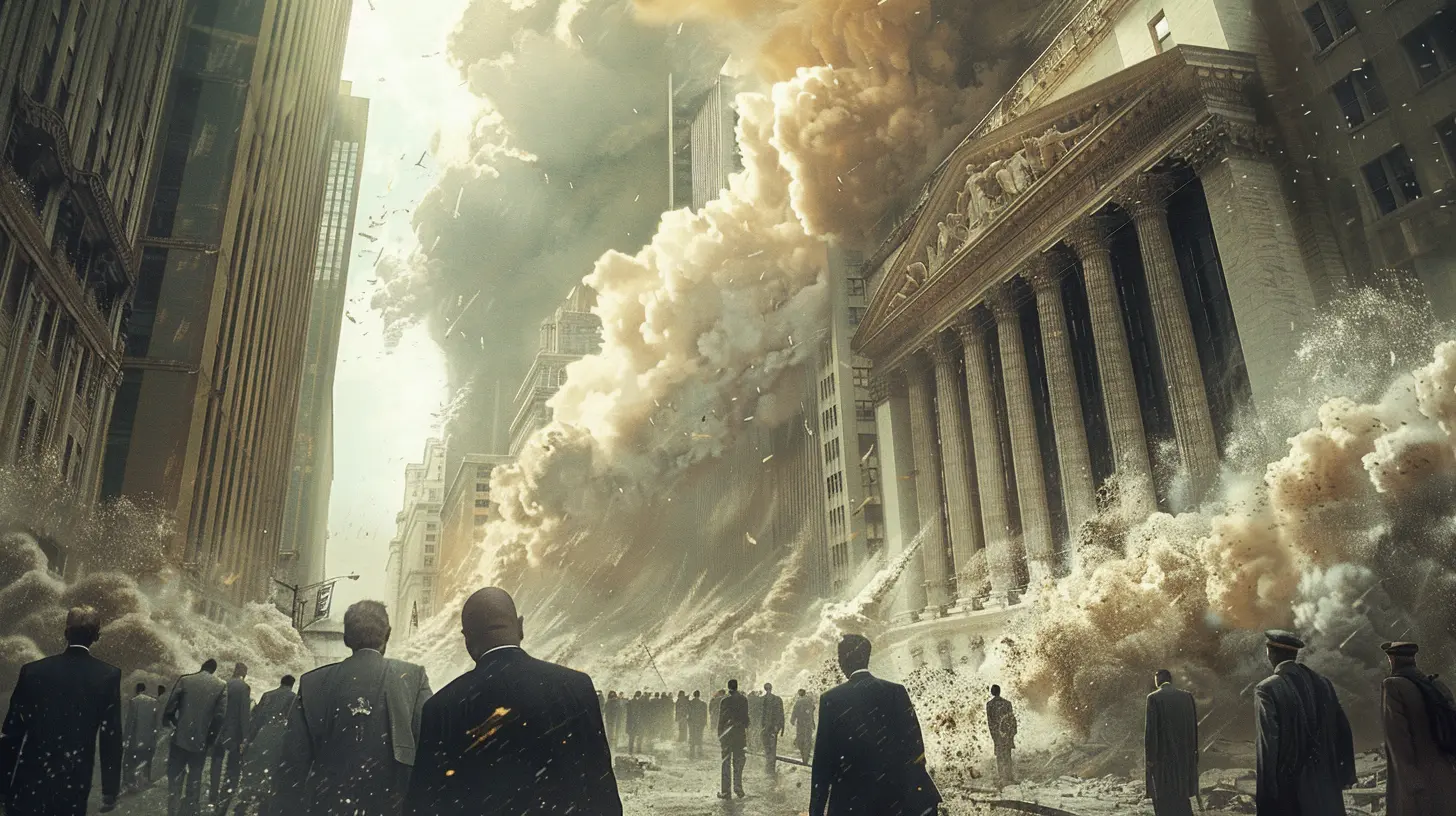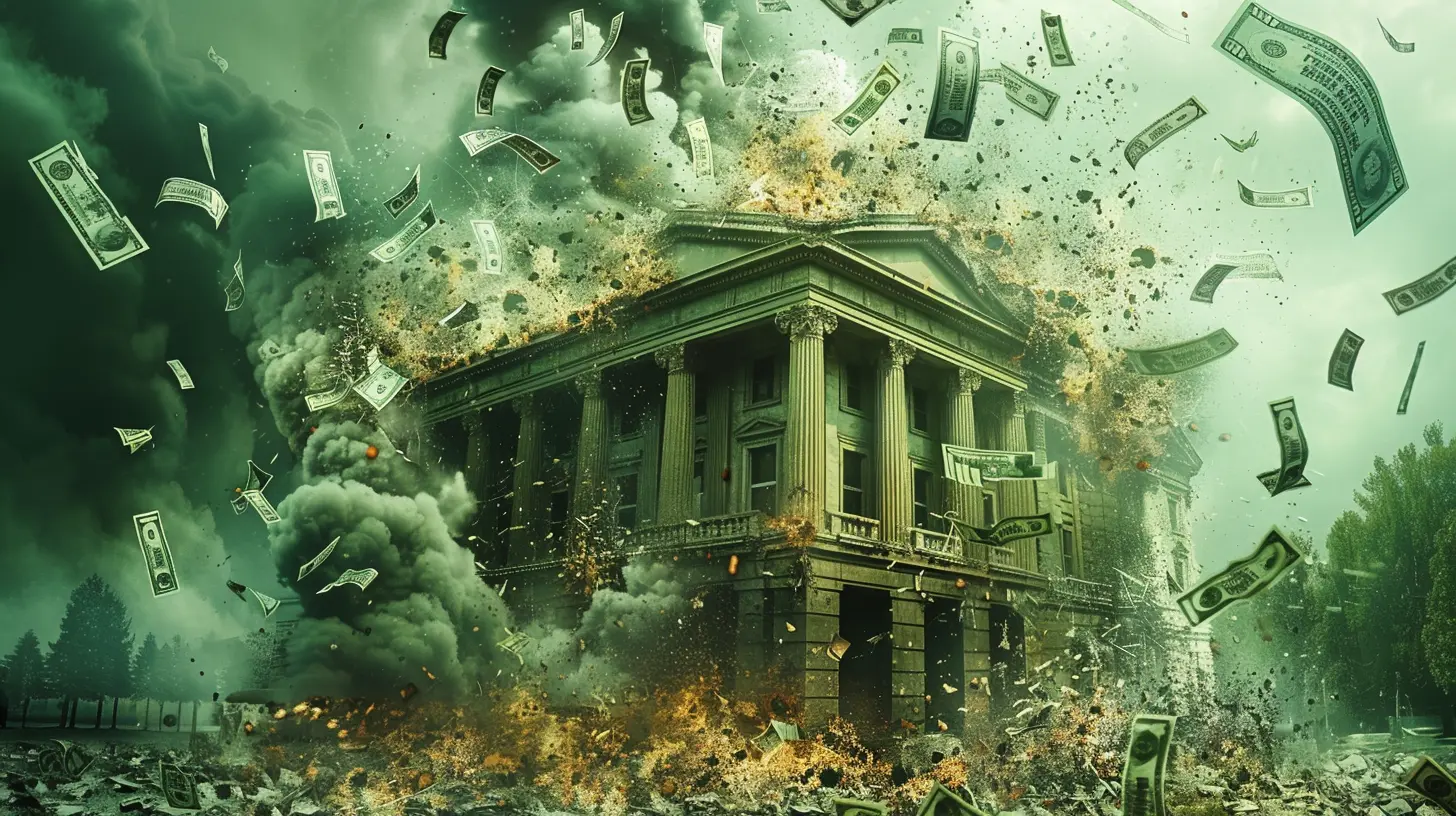The Great Financial Crises in History: What Can We Learn?
10 September 2025
Let’s face it. Talking about financial crises is about as fun as arguing with your internet provider. But hey, if we can't laugh through the pain, what’s even the point?
So today, we’re diving headfirst (and wallet-first) into the chaotic, hair-pulling history of financial meltdowns with a twist – we’re keeping it light, casual, and loaded with useful takeaways.
Because if history has taught us anything, it’s that humans are excellent at repeating their mistakes… especially when money is involved. So grab your favorite beverage (bonus points if it's not overpriced coffee), kick back, and let’s stroll through the financial disasters that shook the world harder than your favorite soda can after a tumble.
What Even Is a Financial Crisis?
Okay, before we start name-dropping historical disasters, let’s set the scene. A financial crisis usually involves a sudden drop in the value of financial assets, panic in the markets, and lots of people shouting “SELL!” in all caps. Sometimes it's caused by banks collapsing, sometimes it's stock markets throwing tantrums, and sometimes it’s just… humans being humans.In other words, it’s what happens when Wall Street gets a bad case of the Mondays — but with billions of dollars.
The OG Meltdown: The Tulip Mania Bubble (1637)
Let’s rewind all the way back to the 1600s in the Netherlands. Picture this: people trading their homes for... tulips. Yes, tulips. Those colorful flowers that you probably forgot to water last spring.Back then, tulips weren’t just decorative; they were status symbols. The rarer the bulb, the wealthier you probably looked. At the peak of tulip mania, a single bulb could cost more than a fancy canal house in Amsterdam. Spoiler alert: the tulip market crashed, and the bubble popped faster than a champagne cork at a royal wedding.
Lesson? Be wary when people start buying things just because the next person is doing it. Markets are like group chats — they can spiral out of control real fast.
The South Sea Bubble (1720): British Buffoonery at Its Finest
Fast forward a century. The British, not wanting to be outdone by tulip-worshipping Dutch folks, decided to put all their financial eggs in one very unstable basket: the South Sea Company.Here’s the TL;DR: the South Sea Company promised Britain unimaginable riches from trading in South America (which, funny enough, they didn’t really have access to). Investors didn’t look at the fine print. Shares skyrocketed. Tea was spilled. And then wham, the bubble popped.
People lost fortunes. Politicians cried. And Isaac Newton famously said, “I can calculate the motion of heavenly bodies, but not the madness of people.”
Lesson? If something sounds too good to be true, it’s probably about as real as my diet on weekends.
The Panic of 1873: When Credit Took a Coffee Break
You know the economy is in trouble when banks start dropping like flies. That’s exactly what happened in 1873. A railroad boom in the U.S. had investors seeing dollar signs. But overbuilding, shaky banking practices, and — shocker — too much speculation led to a domino effect of bankruptcies.It triggered a depression that lasted six years — nicknamed the "Long Depression," which sounds like the title of a really sad indie film.
Lesson? Don’t put all your investments into one trend. Railroads were the crypto of the 1870s — until they weren’t. Diversify like you do with your streaming subscriptions.
The Wall Street Crash of 1929: The Granddaddy of Them All
Welcome to the Roaring Twenties! Jazz was hot, flapper dresses were cooler than lemonade in July, and everyone was investing in stocks like they were Pokémon cards.People borrowed money (lots of it) to invest, assuming the market would only go up. But markets do this cute thing where they go down too. On October 29, 1929 — Black Tuesday — the house of cards collapsed faster than your friend’s New Year’s resolutions.
Cue: the Great Depression. Unemployment shot up, banks failed, and the economy took a nap that lasted an entire decade.
Lesson? Leverage is sexy — until it’s not. Borrowing to invest is like juggling chainsaws. It looks impressive until you lose a limb.
The 1997 Asian Financial Crisis: Currency Chaos
This crash started in Thailand and quickly spread like a money-munching parasite across Southeast Asia. Currencies plummeted, foreign investments fled, and entire economies flipped upside down.The culprit? A toxic cocktail of overvalued currencies, excessive borrowing, and — you guessed it — investor panic.
Lesson? Pay attention to currency risk. And remember that international markets are like roommates — one messes up and everyone else pays for it.
The Dot-Com Bubble (2000): The Internet’s Awkward Teenage Phase
Ah, the late ‘90s. Everyone thought the internet was going to cure cancer and make them millionaires. People were throwing cash at any company that ended in ".com", even if their business model was just a website that sold pet food and dreams.But surprise! Many of these startups had no profits, no plan, and sometimes no product. The bubble popped right around 2000, wiping out $5 trillion in market value by 2002.
Lesson? Don’t invest in companies just because they’re trendy. It's the financial equivalent of buying a chinchilla because it looked cute on TikTok.
2008 Global Financial Crisis: Greed, Glitches, and Giant Messes
This one still stings. The 2008 Global Financial Crisis was like the Titanic of economic disasters — massive, tragic, and totally avoidable.Thanks to reckless lending, complex financial products no one really understood (looking at you, CDOs), and a booming housing market built on matchsticks, the U.S. economy did a backflip into a recession.
Banks failed. Housing prices tanked. Millions lost jobs, homes, and probably a bit of their sanity.
Lesson? Understand what you're investing in. Also, regulation matters. Monopoly is a fun game until someone starts printing their own money.
2020 COVID-19 Crash: The Plot Twist No One Saw Coming
March 2020 brought more than mask mandates and banana bread recipes. The global markets crashed as the pandemic threw everything into chaos. Stock markets plummeted, supply chains snapped, and oil prices literally went negative (yes, they paid people to take oil — wild times).Luckily, central banks jumped in with stimulus packages faster than you can say “quantitative easing,” and things didn't spiral as badly as they could have.
Lesson? Expect the unexpected. And wash your hands, both literally and financially speaking.
So, What’s the Common Thread Here?
Besides the whole “people losing lots of money” thing? Every single crisis had a few ingredients in common:- Overconfidence: Markets always seem invincible... until they’re not.
- Speculation: People love hopping on bandwagons, even if the wheels are falling off.
- Lack of Transparency: If you need a graduate degree to understand your investment, something's fishy.
- Panic: Nothing spreads faster than fear. Except maybe cat videos.
What Can We Learn From All of This?
1. Diversify Like Your Financial Life Depends On It (Because It Does)
You wouldn’t wear just one outfit every day (I hope). So why put all your money into one asset? Spread it out. Stocks, bonds, real estate, maybe even a little crypto (if you're feeling spicy).2. Don’t Try to Time the Market
Spoiler: you’re not smarter than the market. Neither am I. And that’s okay! Instead of playing short-term games, think long-term. Compound interest is the closest thing we’ve got to magic.3. Build an Emergency Fund
Because crises don’t RSVP. Have 3-6 months of expenses tucked away in a boring, no-fuss savings account. Future-you will thank you.4. Read the Fine Print
If you don't understand how your investment makes money, you're probably the one being invested in. Trust but verify.5. Keep Your Emotions in Check
Investing with emotion is like grocery shopping when you’re hungry. It never ends well. Stay cool, calm, and caffeinated.Final Thoughts: It’s Not All Gloom and Doom
Yeah, financial crises are messy. They bring panic, pain, and a lot of “I told you so” moments. But they also bring lessons. Every meltdown leads to change — new regulations, better risk management, and smarter investors (hi, that’s us!).So don’t fear the bubbles, the crashes, or the economic roller coasters. Just buckle up, plan smart, and maybe don’t buy any tulips with your life savings.
all images in this post were generated using AI tools
Category:
Financial CrisisAuthor:

Uther Graham
Discussion
rate this article
1 comments
Patricia McCracken
History repeats itself; ignore its lessons at your peril. Embrace financial education or suffer the consequences—your choice.
September 18, 2025 at 5:00 AM

Uther Graham
Absolutely! Understanding history is crucial to avoiding past mistakes. Financial education empowers us to make informed choices and build a more secure future.


